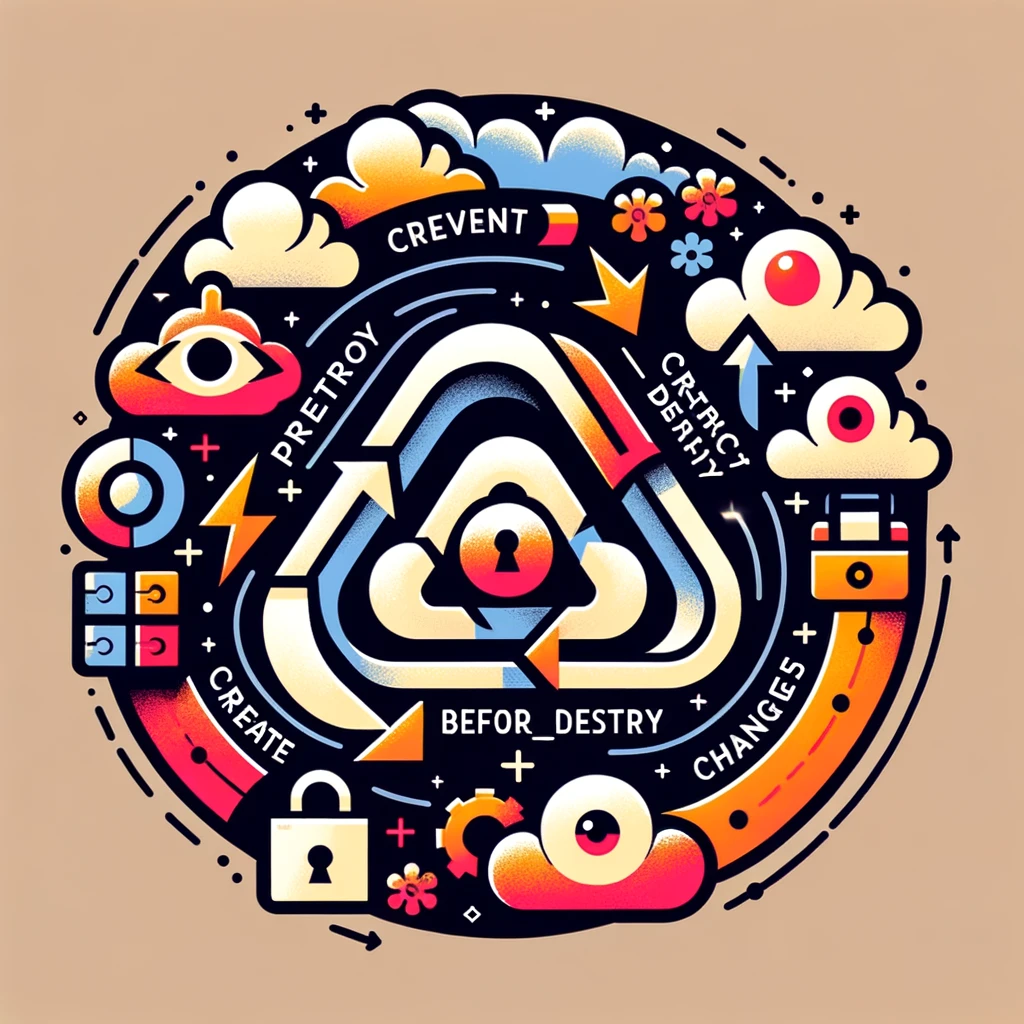Introduction
Terraform, a powerful tool by HashiCorp, is renowned for its ability to provision and manage infrastructure through code. One of the features that make Terraform exceptionally flexible and powerful is its lifecycle management capabilities. Lifecycle rules in Terraform allow users to fine-tune the behavior of resources during creation, update, and deletion. This article explores Terraform lifecycle rules, how they work, and their practical applications in managing infrastructure as code (IaC).
What are Terraform Lifecycle Rules?
Lifecycle rules in Terraform are specific directives that can be included within a resource block to customize how Terraform creates, updates, or deletes that resource. These rules give you control over the lifecycle of your infrastructure resources, enabling more predictable and stable management processes.
Key Lifecycle Rules in Terraform
Terraform lifecycle rules include several key directives:
create_before_destroy: This rule changes the default behavior of Terraform by creating a new resource before destroying the old one during an update. It’s particularly useful for minimizing downtime during updates or changes to critical resources.prevent_destroy: This boolean flag prevents Terraform from destroying a resource. If you set this flag totrue, Terraform will generate an error if an operation tries to destroy the resource, making it an essential tool for protecting critical infrastructure from accidental deletion.ignore_changes: This directive allows you to specify attributes that Terraform should ignore when planning updates to a resource. It’s useful for cases where external processes may change a resource, and you don’t want these changes to be overwritten by Terraform.
Practical Applications of Lifecycle Rules
Zero Downtime Deployment
One of the most common uses of lifecycle rules is to achieve zero downtime during deployments or updates. By using the create_before_destroy directive, you can ensure that new instances of a service are fully up and running before the old ones are taken down, minimizing or eliminating service interruptions.
Protecting Sensitive Resources
The prevent_destroy rule is crucial for protecting sensitive or critical resources that should never be deleted through Terraform. This could include production databases, key storage mechanisms, or any infrastructure whose deletion would cause significant disruption or data loss.
Managing External Changes
In environments where resources might be modified by external processes or systems outside of Terraform, the ignore_changes rule helps maintain Terraform’s idempotency. By ignoring changes to certain attributes, you can prevent Terraform from attempting to revert these external modifications on each apply, which could lead to conflicts or unnecessary updates.
Implementing Lifecycle Rules
To implement lifecycle rules, you include a lifecycle block within your resource definition in Terraform. Here’s a basic example:
resource "aws_instance" "example" {
ami = "ami-123456"
instance_type = "t2.micro"
lifecycle {
create_before_destroy = true
prevent_destroy = false
ignore_changes = [ami, "tags.%"]
}
}
In this example, create_before_destroy is set to true to ensure that a new instance is created before the old one is destroyed. prevent_destroy is set to false, allowing Terraform to destroy this resource. ignore_changes is used to ignore changes to the ami attribute and any changes to tags, allowing these aspects of the resource to be managed outside Terraform without causing conflicts.
Conclusion
Terraform’s lifecycle rules offer a powerful mechanism for managing the behavior of resources throughout their lifecycle. By understanding and leveraging these rules, you can achieve more stable and predictable infrastructure management practices, protect critical resources, and accommodate external changes without losing the benefits of infrastructure as code. Whether you’re managing a handful of resources or orchestrating complex, multi-service environments, mastering lifecycle rules is a key skill in the Terraform practitioner’s toolkit.


